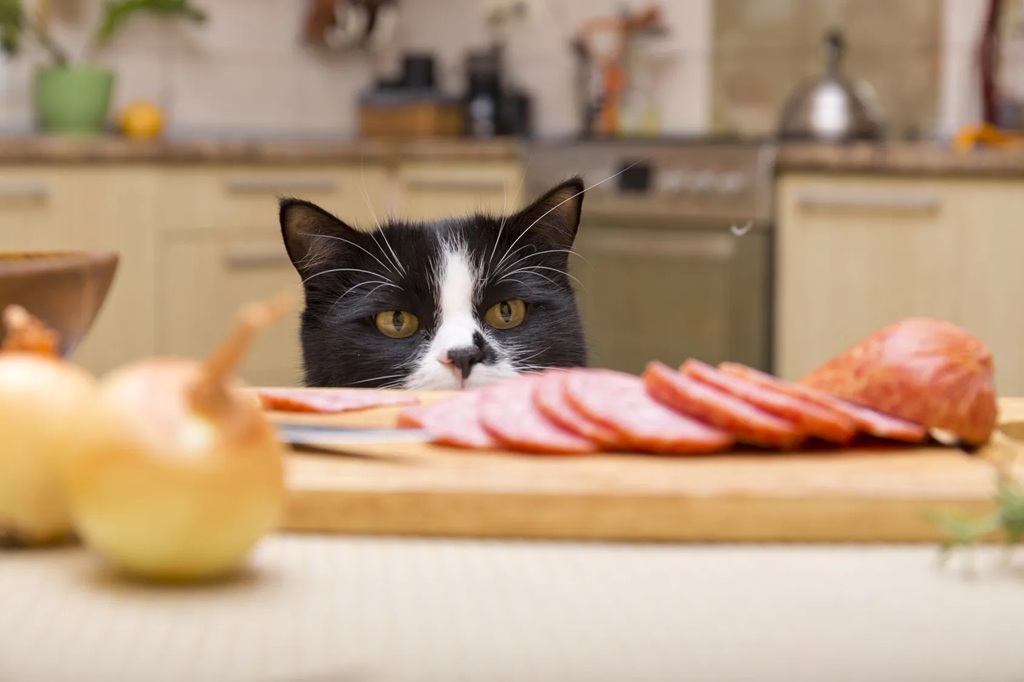Cats are cherished members of our families, and their health is our top priority. When a feline friend begins to exhibit signs of food sensitivities, it can lead to stress for both you and your pet. But how do you pinpoint the root cause? An elimination diet could hold the answer. This detailed guide will walk you through how to identify food sensitivities in cats with elimination diets, ensuring your pet’s health and happiness. You can also explore Homepetusa for more resources on pet care.
Understanding Food Sensitivities in Cats
Cats, like humans, can develop adverse reactions to certain foods. These reactions may manifest as gastrointestinal issues, skin irritations, or behavioral changes. Research shows that about 10-15% of cats suffer from some form of food allergy or sensitivity.
Common Signs of Food Sensitivities
- Vomiting or diarrhea: Persistent digestive troubles after meals.
- Chronic ear infections: Indicating underlying inflammation.
- Itchy skin or hair loss: Especially around the face, neck, and belly.
- Changes in appetite or weight: Including sudden loss or gain.
It’s vital to differentiate between food sensitivities and allergies. While allergies involve the immune system and can lead to life-threatening anaphylaxis, sensitivities typically cause chronic but less severe symptoms.
Why an Elimination Diet Works
Elimination diets are the gold standard for identifying food sensitivities in cats. By feeding your cat a simplified diet consisting of novel proteins and limited ingredients, you can isolate the culprits causing adverse reactions.
- Scientific Basis: The principle behind this method is straightforward—removing potential allergens lets the body “reset,” reducing inflammation and other symptoms.
- Success Rates: According to a study published in Veterinary Dermatology, elimination diets identify sensitivities in over 80% of cases.
Choosing the Right Foods
Opt for:
- Novel proteins like rabbit or venison, which your cat hasn’t previously consumed.
- Single-source carbohydrates such as sweet potato.
Avoid:
- Grains like wheat, are common allergens.
- Artificial additives, can obscure results.
Preparing Your Cat for an Elimination Diet
Switching your cat’s diet isn’t as simple as it sounds. It requires patience and meticulous planning.
Transitioning to the New Diet
Sudden dietary changes can upset a cat’s digestive system. Follow these steps:
- Mix gradually: Combine increasing portions of the new food with the old over a week.
- Monitor reactions: Note any immediate changes in symptoms.
Tips for Feeding
- Stick to the elimination diet exclusively—no treats or flavored medications.
- Feed at regular intervals to track patterns effectively.
Training Your Cat During the Process
While identifying food sensitivities is the primary goal, maintaining a harmonious environment is equally crucial. For instance, during elimination diets, you may need to revisit some fundamental training techniques. If your cat’s litter box habits change, check out this helpful guide on how to train a cat to use the litter box.
Tracking Progress and Symptoms
Keeping a food diary is essential during the elimination diet. This will help you track which foods trigger symptoms and which ones your cat tolerates well.
What to Include in the Diary
- Daily symptoms: Severity, frequency, and type.
- Foods consumed: Including portion sizes and ingredients.
- General observations: Energy levels, coat quality, and weight changes.
Using a systematic approach ensures you don’t overlook subtle patterns.
Reintroducing Foods: The Challenge Phase
After the elimination period (typically 8–12 weeks), you’ll gradually reintroduce foods. This stage is crucial for confirming sensitivities.
Steps to Reintroduce
- Introduce one food at a time over three days.
- Monitor symptoms closely.
- Record findings before moving on to the next item.
If symptoms reappear, it’s a clear indication that the newly introduced food is problematic.
Common Pitfalls in Elimination Diets
Cheating on the Diet
Feeding your cat “just a little” of their old favorites can derail the process entirely.
Lack of Patience
Results take time—usually several weeks. Premature conclusions can lead to unnecessary restrictions.
Ignoring Environmental Factors
External allergens like pollen or dust mites can mimic food sensitivities. Rule out these possibilities first.
What to Do After Identifying Food Sensitivities
Once you’ve pinpointed problematic ingredients, it’s time to develop a long-term feeding strategy.
Formulating a Permanent Diet
- Consult your vet to create a balanced, allergen-free meal plan.
- Consider hypoallergenic commercial diets or home-cooked meals with veterinary guidance.
Related: How to Create a Safe Space for Your Dog
Benefits of Addressing Food Sensitivities
Identifying and addressing food sensitivities improves not only your cat’s health but also your bond with them. A happier, symptom-free cat leads to fewer vet visits and reduced stress for both of you.
FAQs
What is the difference between food sensitivity and food allergy?
Food sensitivities are chronic and less severe, often causing digestive issues. Allergies trigger an immune response, potentially leading to life-threatening symptoms.
How long does an elimination diet take?
Typically, it lasts 8–12 weeks, though some cases may require longer observation.
Can I perform an elimination diet without a vet’s supervision?
While possible, it’s risky. A vet ensures the diet is nutritionally balanced and safe for your cat.
Are there commercial elimination diets available?
Yes, brands like Hill’s and Royal Canin offer specialized formulas designed for food trials.
What if my cat refuses to eat the new diet?
Gradual transitions and using warming techniques to enhance smell can help. Consult your vet if refusal persists.
Can multiple food sensitivities exist?
That is absolutely why thorough testing and documentation are essential.
Conclusion
Understanding how to identify food sensitivities in cats with elimination diets is a game-changer for pet owners. This meticulous process, though time-consuming, offers unparalleled insights into your cat’s dietary needs. By following the steps outlined here and consulting professionals, you can ensure your feline friend thrives in the best health possible.






